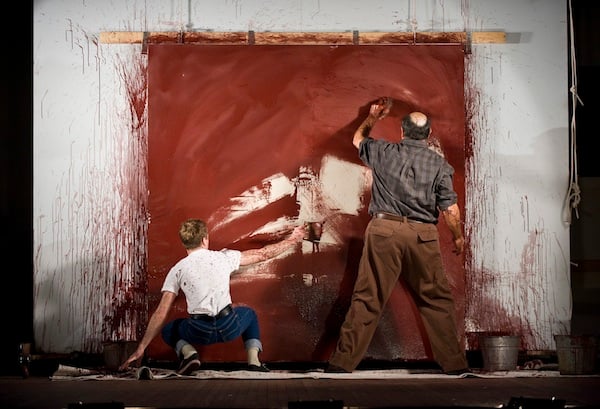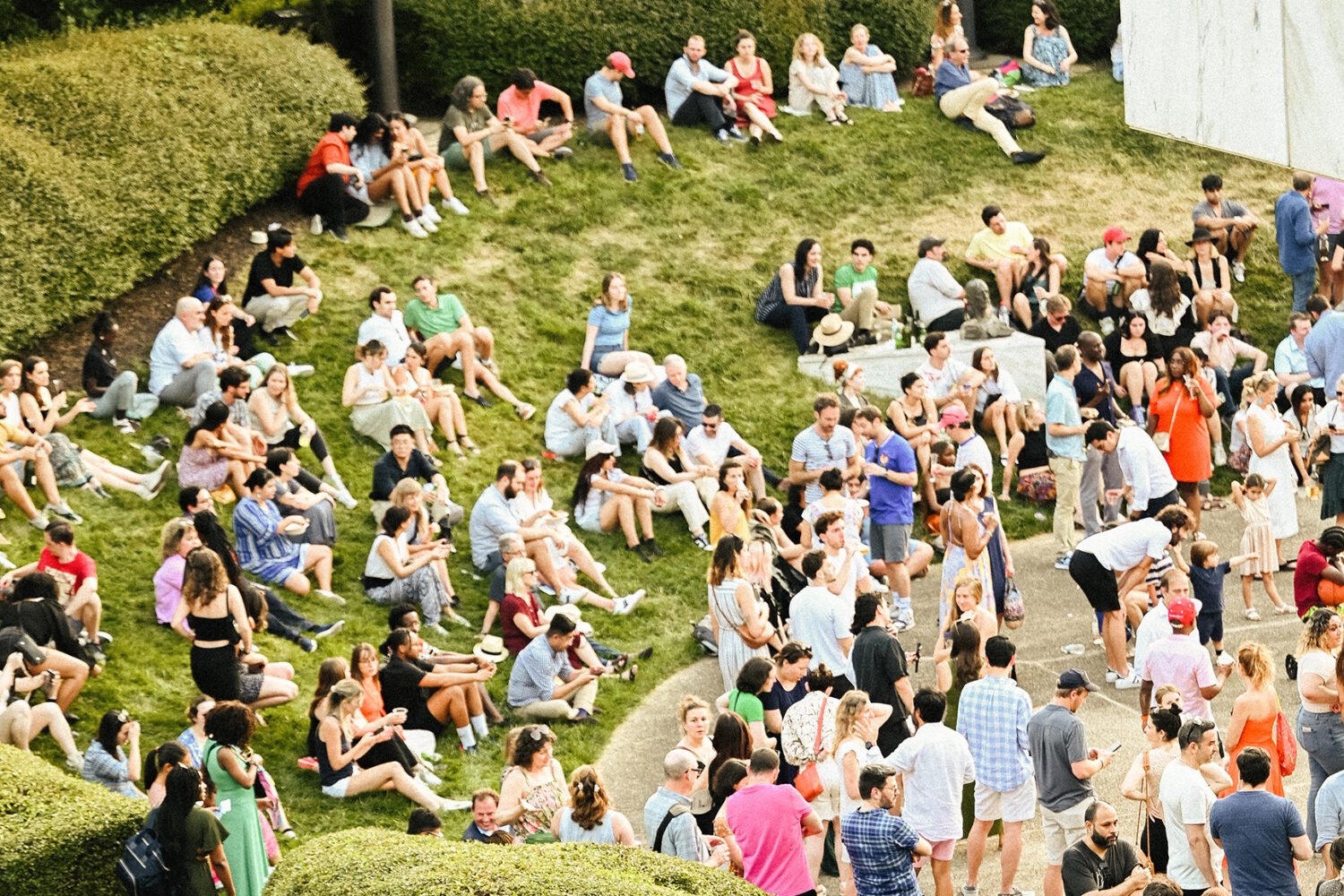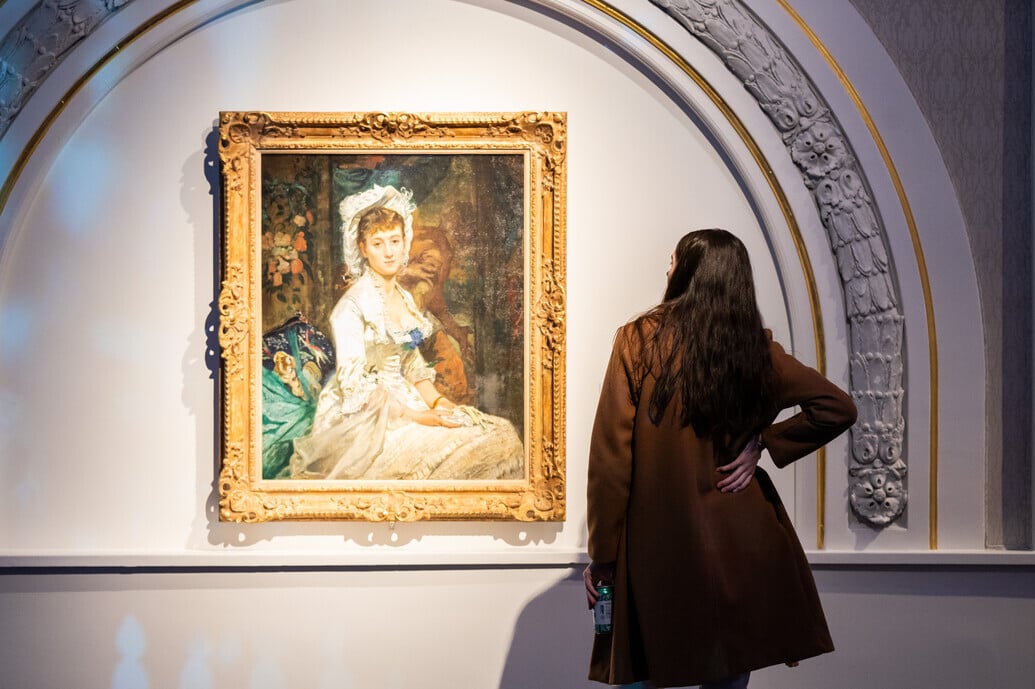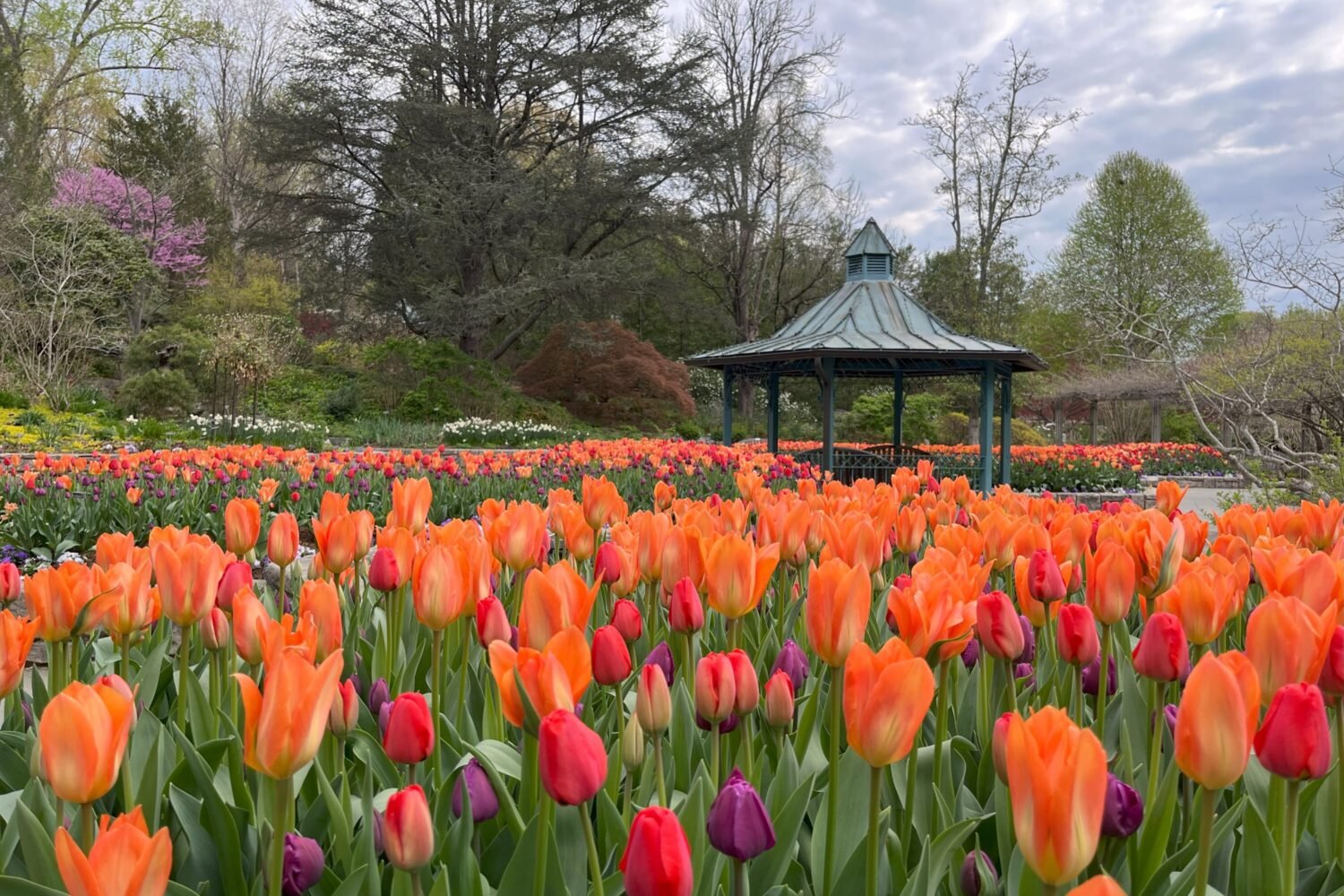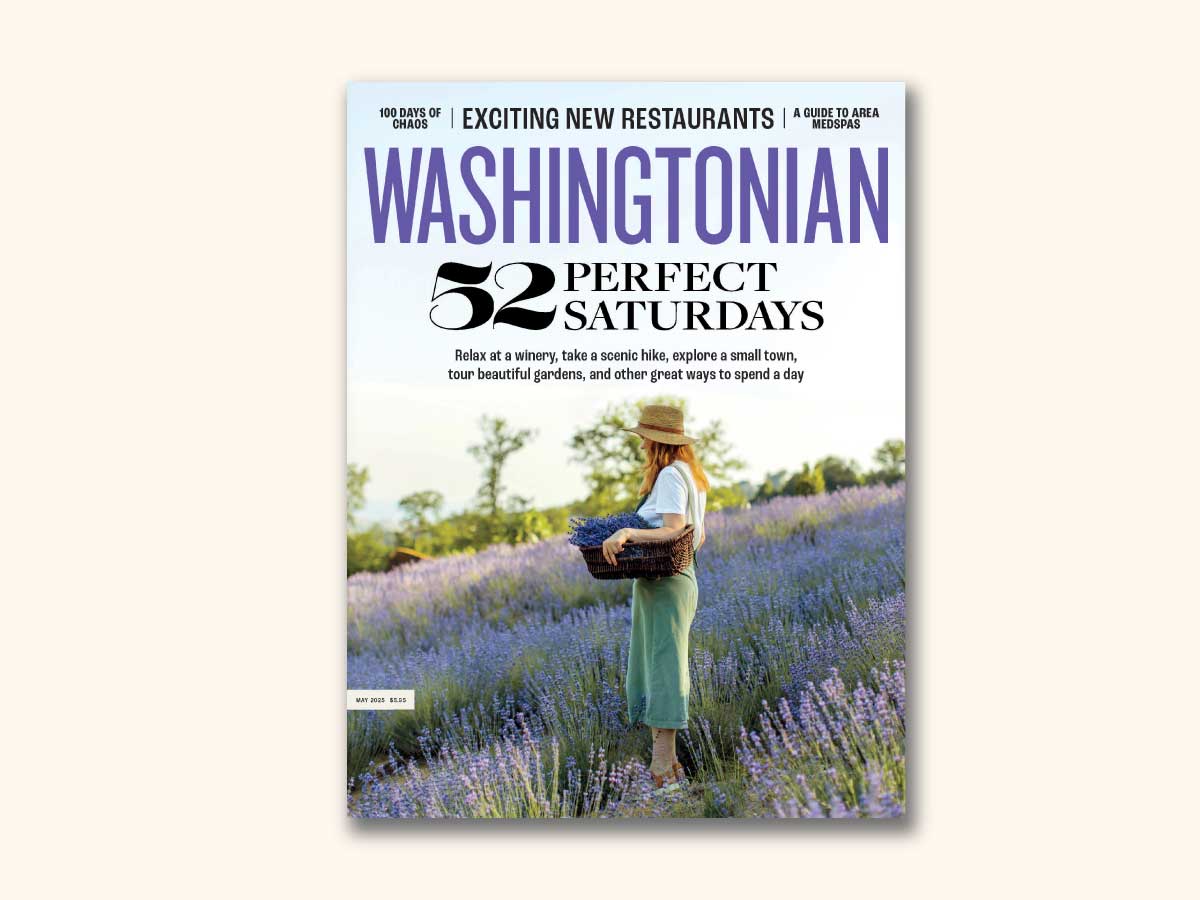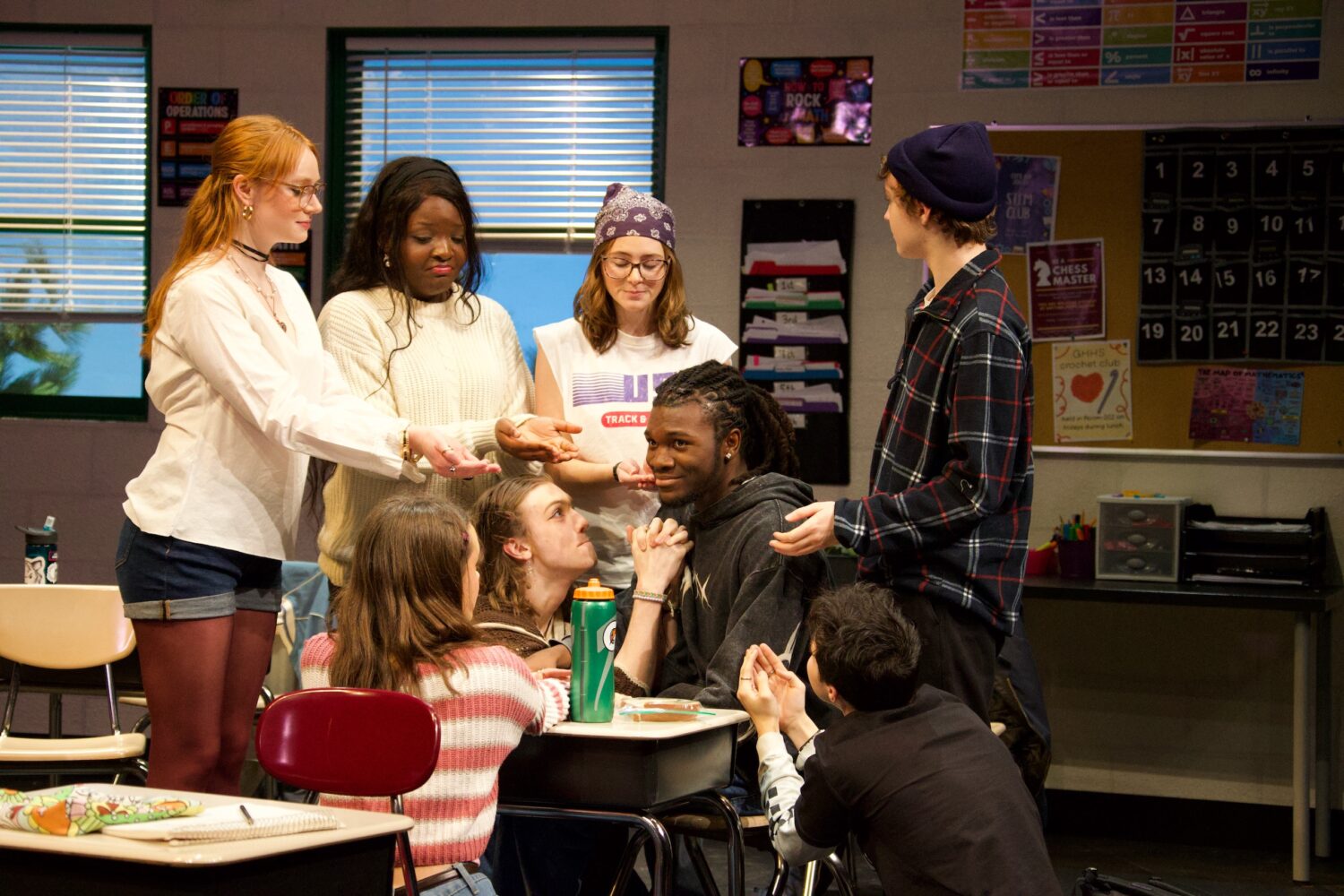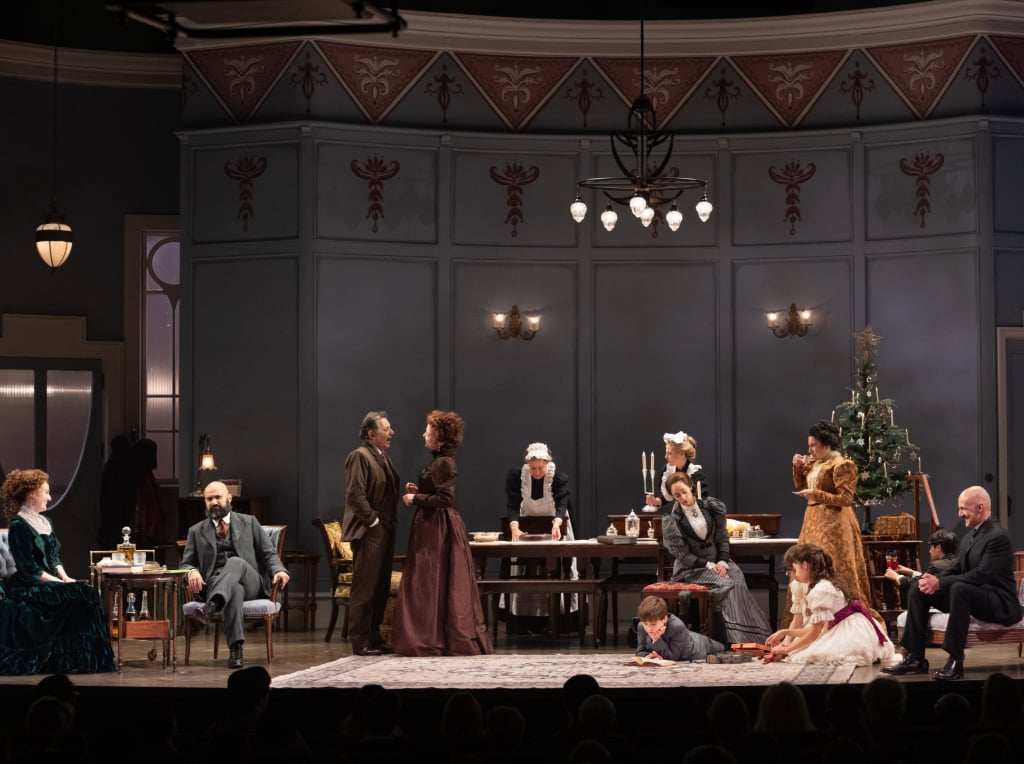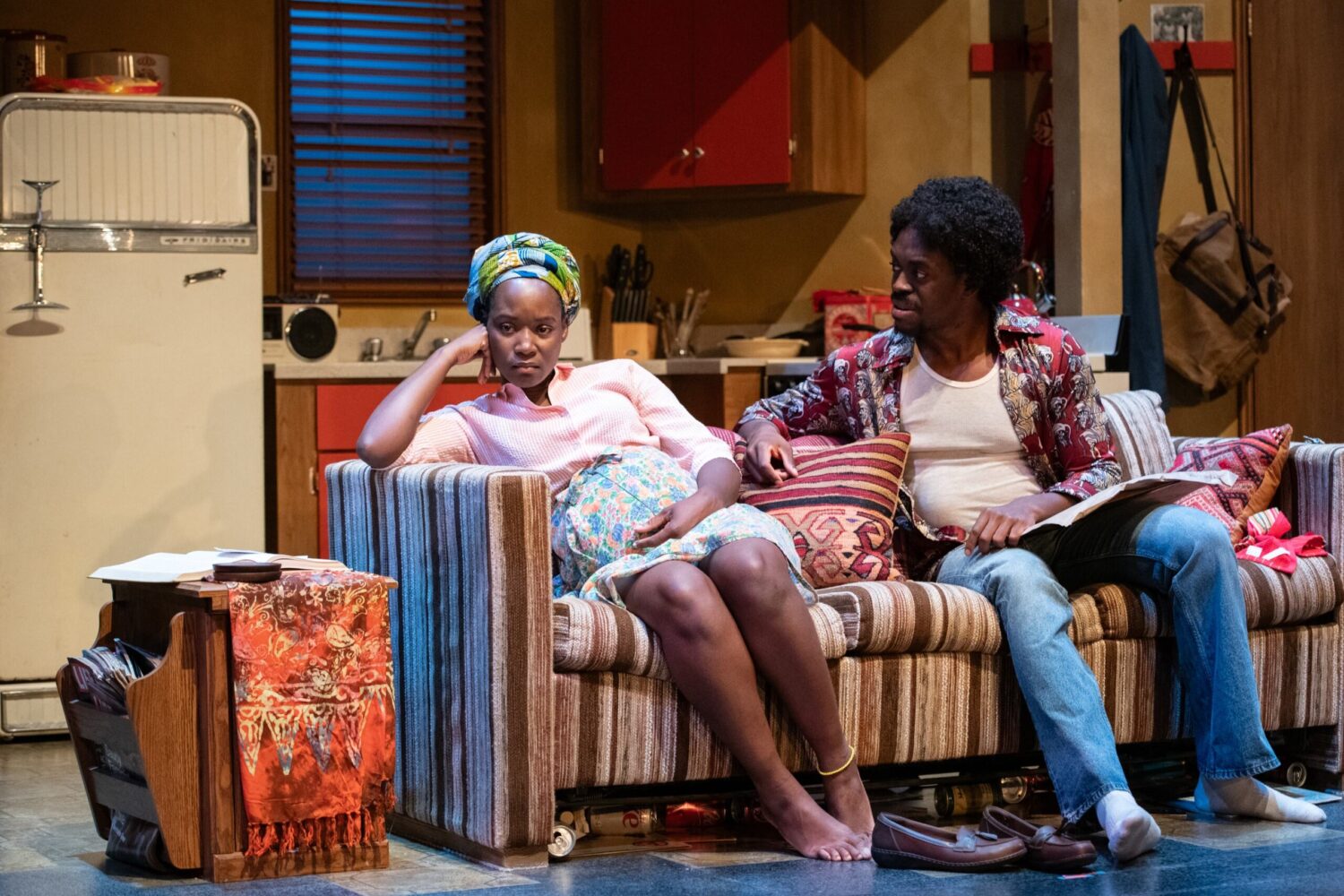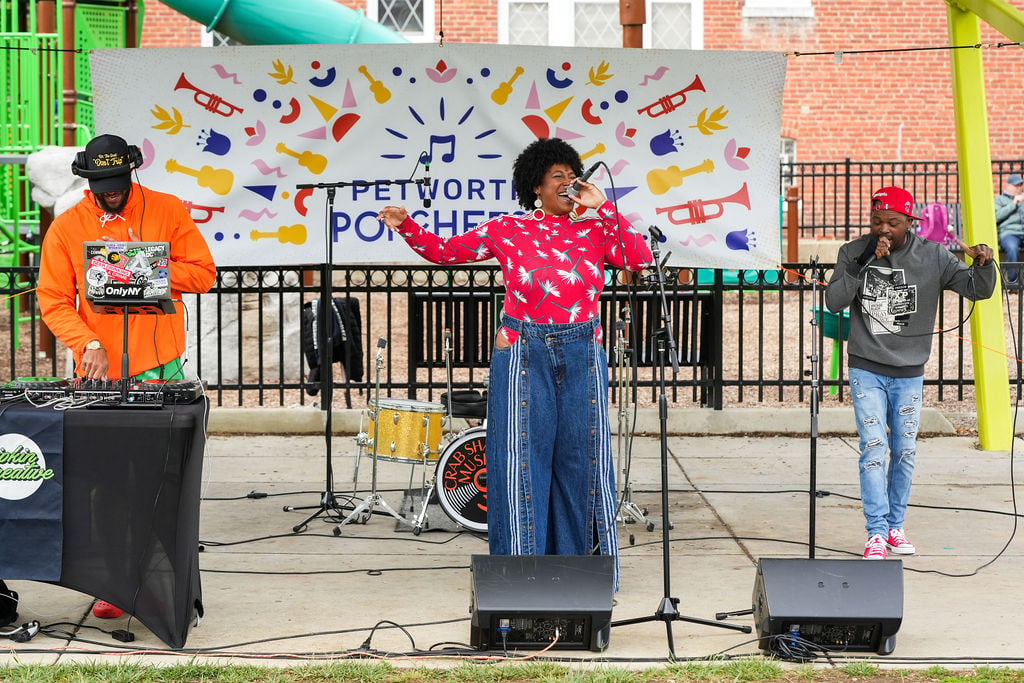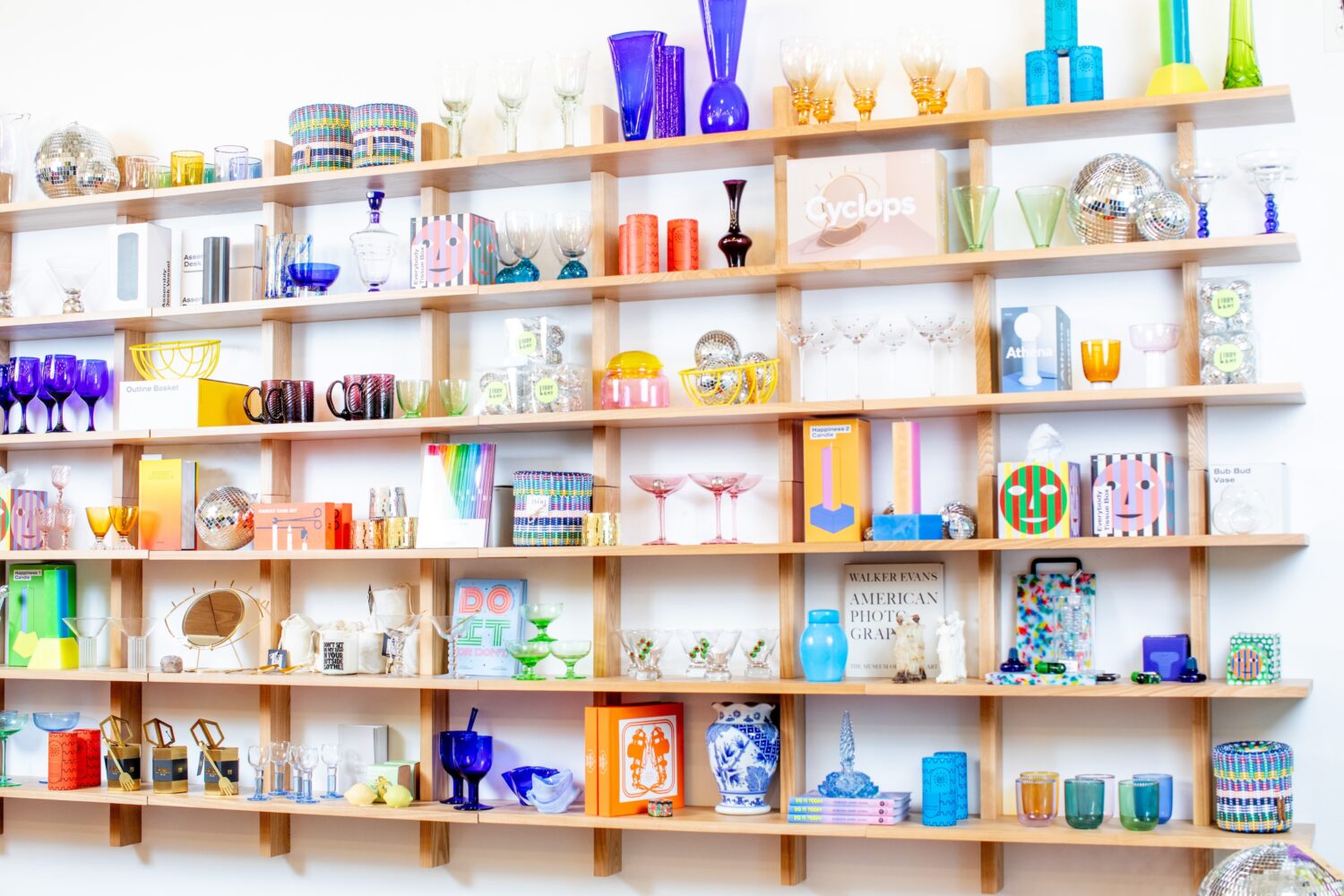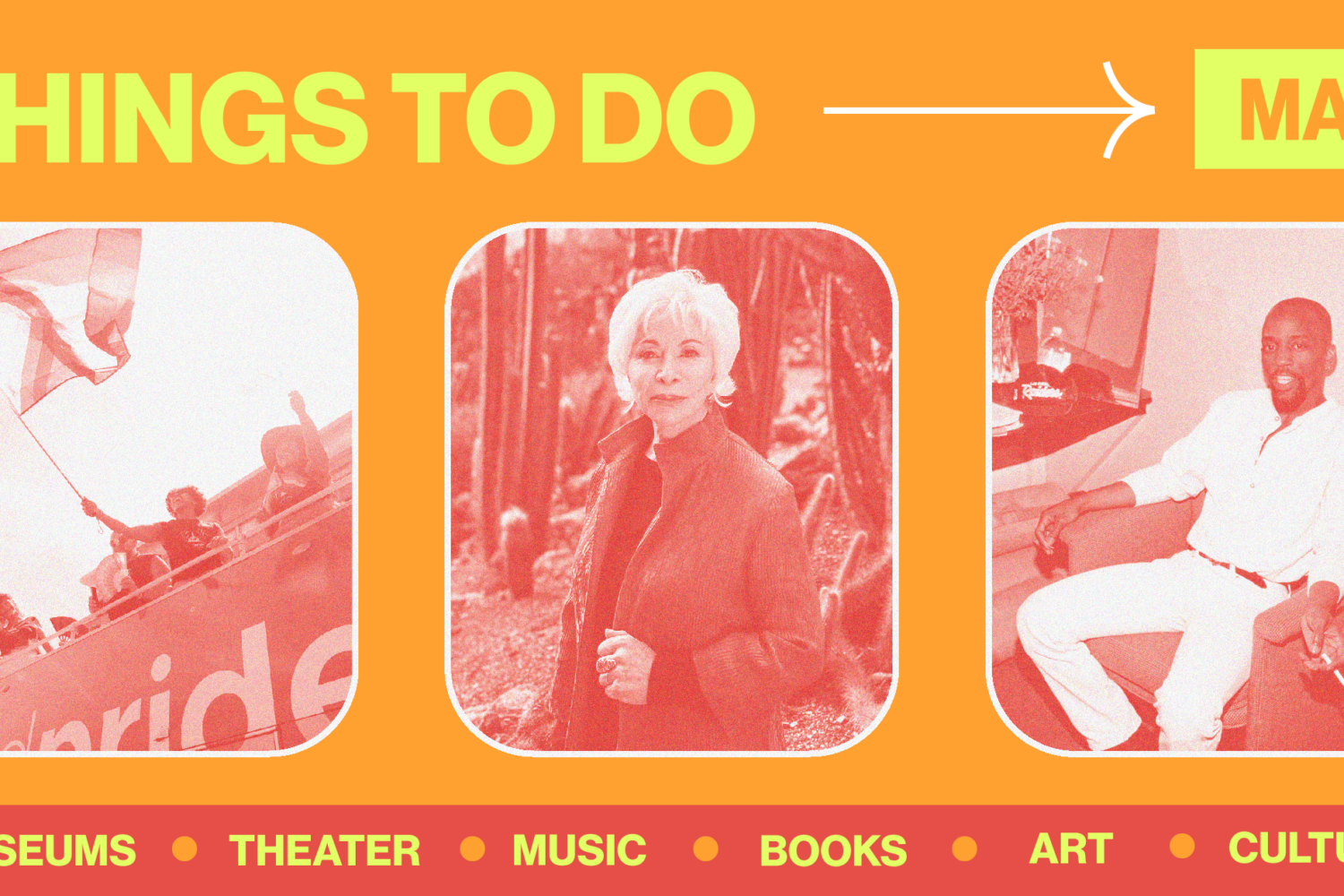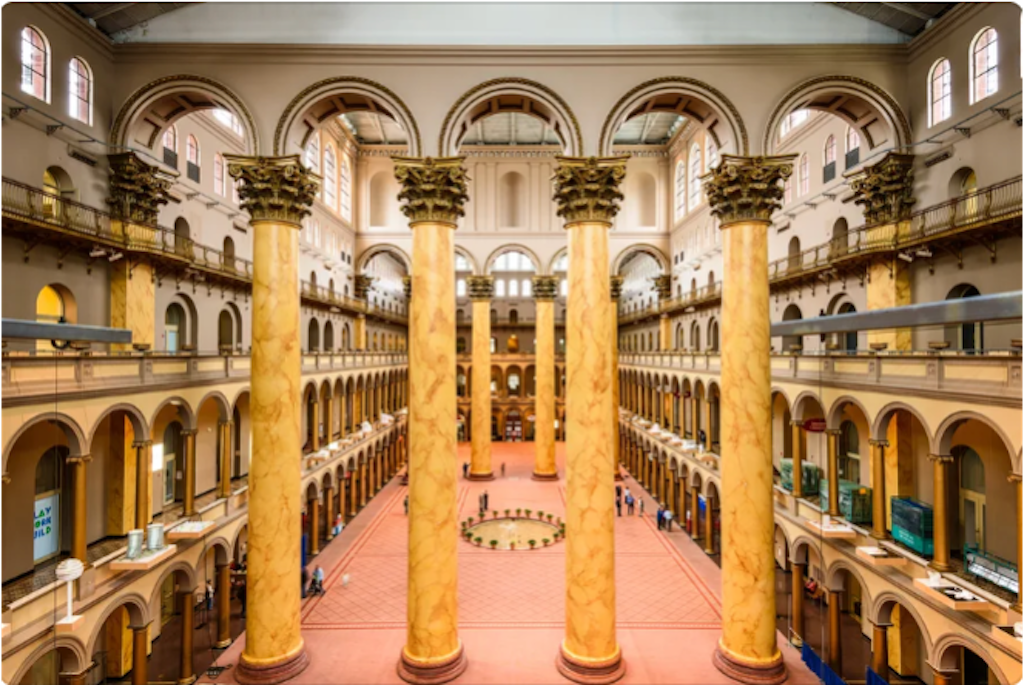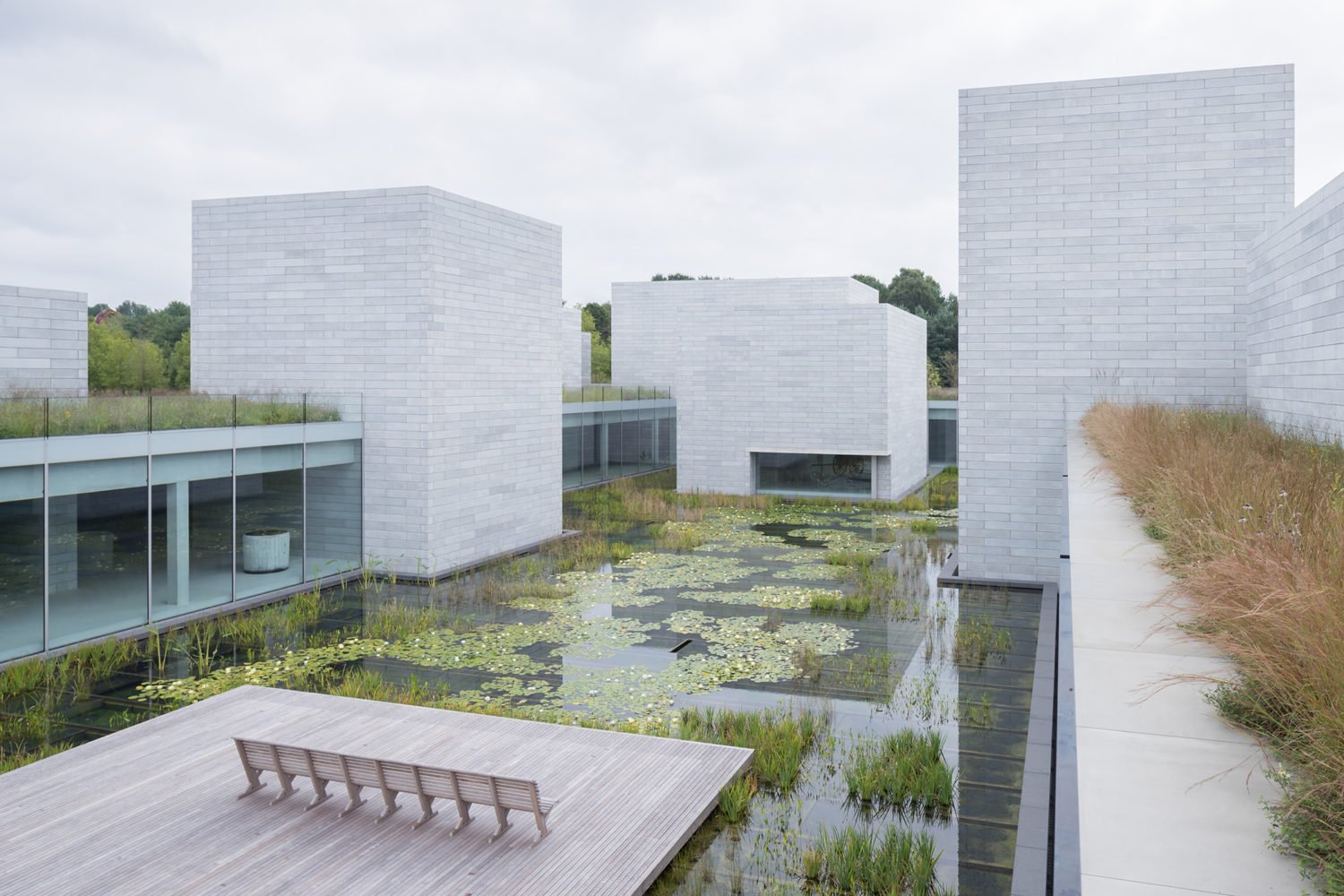Patrick Andrews as Ken and Edward Gero as Mark Rothko in Red, at Arena Stage through March 11. Photograph by Liz Lauren.
![]()
It’s a testament to the skills of director Robert Falls that he achieves the seemingly impossible in Red, currently playing at Arena Stage—he makes spellbinding theater out of watching paint dry. During one tumultuous scene in the middle of the play, Mark Rothko (Edward Gero) and his assistant, Ken (Patrick Andrews), cover a canvas with paint as if possessed, working in silent, furious tandem. Then they stop. On the square behind them, now a deep, shining shade of maroon, their visible brush strokes slowly fade as the paint begins to set, and for some inexplicable reason, it’s mesmerizing to watch.
To say that art, and one man’s tricky, impenetrable understanding of it, is at the heart of Red—which is co-presented by Arena Stage and Chicago’s Goodman Theatre and arrives here after a well-received Chicago run —is an understatement. John Logan’s Tony-winning 2009 play is a fascinating look at the dogmatic, unyielding vision of Rothko, whose paintings (presumably to his chagrin) adorn the walls of endless college dorm rooms and major art galleries alike. As the play opens, Rothko undertakes a new commission to provide murals for the Four Seasons restaurant in the new Seagram Building in New York. To console himself for the indignity of providing art as decor, he insists these new paintings be profound, dark, unwelcoming—and that they “ruin the appetite of every son of a bitch” who eats next to them.
Nevertheless, the commission is hefty ($35,000), and so Rothko hires an assistant, Ken (Andrews), who’s as green and eager as Rothko is irascible and demanding. Ken is a painter, too, which Rothko lets him know has nothing whatsoever to do with his role in the studio. Instead, he mixes paints, cleans, helps prep canvases, and listens to Rothko espouse his vision of art, which ranges from how artists should work from 9 to 5, “like bankers,” to how they should also all starve for their art—with Rothko as an exception.
For such a short (100 minutes) and focused play, Red manages to cover a surprising number of bases. Rothko’s relationship with Ken, a fictional character invented by Logan to explore the artist’s character, is initially one-sided, but as the play shifts towards its inevitable, almost Oedipal conclusion, Ken’s character takes on a new grittiness, reflecting his mentor. At the play’s start, Andrews is all two-dimensional Richie Cunningham earnestness and Converse sneakers, but as Ken’s tragic past unfolds, the character takes on a new steeliness, with Andrews resisting the temptation to make Ken just a foil for Rothko’s grim self-absorption.
Gero, long one of Washington’s most accomplished actors, has a real prize of a role here, and he doesn’t disappoint. His head shaved into a likeness of Rothko’s baldness, he rants and fumes his way across the stage, almost maniacal in his furious commitment to his art. But he’s also gratifyingly funny, whether proclaiming grandly that “nature doesn’t work for me. The light is no good,” or summoning up images of Satan and bloody wrists in what may be the grimmest game of word association in history. Like Ken, Rothko witnessed gory acts of brutality as a child, but with age, he’s harnessed them into a fearsome, unhappy genius. His paintings, he tells the younger man, are “a door. An aperture. A gaping mouth. A moan of rapture. Something divine. Or damned.” Which is about as far from an aesthetically pleasing vase of tulips as it comes.
Logan’s device of using the two characters to unpeel each other, layer by layer, works brilliantly. The audience, rooting for some kind of kinship between the two, adopts Ken’s yearning for some kind of wisdom or approval, which makes Rothko’s snarling outbursts all the more painful. After one particularly vicious confrontation between the two, Ken moves to get his coat, supposing he’s fired. “Fired?” Rothko replies. “This is the first time you ever existed.” And in a pleasingly visual way, the paintings onstage seem to illustrate the complex relationship between the two in the endless struggle between red (representing everything) and black (representing nothing). Like any confirmed depressive, Rothko is haunted by the idea that one day black will engulf red, creating a vacuum of emptiness.
Todd Rosenthal’s set is a fully functioning studio, complete with paints, skylights, canvases, and industrial lamps—but is devoid enough of any personal effects to confirm our understanding of Rothko as an obsessive professional. Lighting designer Keith Parham spotlights Rothko’s paintings so they literally glow from within, communicating the church-like experience a viewer gets when surrounded by them. “What do you see?” Rothko asks Ken when the pair first meet, to which the obvious answer is, “Red.” But as Logan’s stellar play shows, there’s so much more to it than that.
Red is at Arena Stage through March 11. Tickets (starting at $55) are available through Arena’s website.

